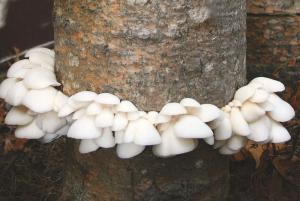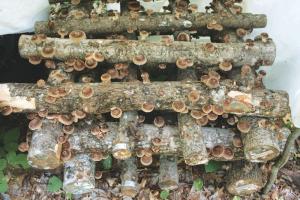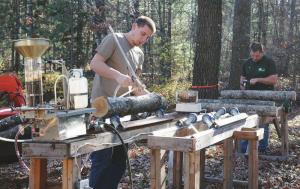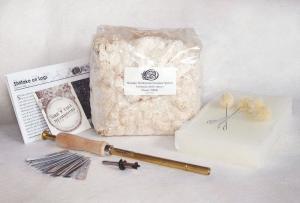2018 - Volume #42, Issue #4, Page #39
[ Sample Stories From This Issue | List of All Stories In This Issue | Print this story
| Read this issue]
Everything You Need To Grow Your Own Mushrooms
 |
 |
 |
 |
The mail-order catalog and the company website are also packed with tips and information to help anyone become a successful mushroom producer.
“When we started, very few even knew what a shiitake mushroom was,” says Joe Krawczyk, co-founder, Field & Forest. “Now the depth and breadth of available gourmet mushrooms is amazing. The ones we offer our customers are those that are most easily cultivated. There are many more still out there.”
Krawczyk and his wife, Mary Ellen Kozak, started the company in the early 1980’s to work with shiitake mushrooms. Today they sell multiple forms of mushroom spawn (the starter material for mushrooms). Types include oyster, reishi, nameko, maitake and more. In some cases there are even different strains that fruit earlier, later, quicker, for longer periods, at different temperatures, or prefer different types of growing medium.
They also sell a wide range of equipment, from drill bits and wax daubers (for covering the inoculation site) to hand tools, power tools and high-speed automated systems to inoculate or inject spawn into logs.
Ready-to-grow kits called Table Top Farms feature 5 popular mushroom varieties. They even have kits for kids to grow gourmet oyster mushrooms on rolls of toilet paper.
Krawczyk admits the one thing they don’t sell is the patience needed by the grower. “Mushrooms aren’t a crop you can plant and expect to show up on schedule,” he says. “If you want something quick and easy, grow radishes.”
Successful growers need to understand the process of decay, he adds. Moisture management is also critical. That said, mushrooms can grow almost anywhere, although wet and humid is better than dry.
“Our climate in Wisconsin isn’t as forgiving as the South or Southeast or even the Northeast,” says Krawczyk. “You have to be aware what the environment is doing and what you need to do to get the logs or growing medium to rot.”
Field & Forest ships product throughout much of the U.S. The one thing a grower needs locally is growing medium. In the case of shiitake mushrooms, oak, maple or ironwood logs are required. Sweetgum logs work in the South. Oyster mushrooms prefer softer hardwoods like aspen, cottonwood and willow. Oyster mushrooms can also be grown on straw.
“The cleaner and more shiny golden the straw, the better,” says Krawczyk. “Wine cap mushrooms don’t care if the straw is clean or full of weed seeds. Just soak it for 24 hrs., add the spawn, and cover it in wood chips. They are the easiest mushrooms on our list to grow.”
Once you know what growing medium you have available, Krawczyk advises picking the species, strain and spawn type that will grow on it. He recommends understanding the fungi you want to grow before ever cutting a log or preparing a growing bed. Once you choose your tools and you’ve inoculated the log or straw, you wait.
This FARM SHOW writer inoculated half a dozen 40-in. oak logs in early spring 2017 and harvested around 20 shiitake mushrooms in the spring and early summer of 2018, mostly from one log.
“That was good,” responded Krawczyk. “The others will fruit when they are ready.”
That could be this fall or next year. Once they start, mushroom production will continue until the log has been consumed. A typical log will produce from 2 to 4 lbs. of shiitake mushrooms over a 4 to 8-year period.
While there is always concern the market for gourmet mushrooms could become over supplied, Krawczyk is confident there is still great potential in most areas.
Contact: FARM SHOW Followup, Field & Forest Products, 501 Hart Dr., Peshtigo, Wis. 54157 (ph 715 582-4997; toll free 800 792-6220; info@fieldforest.net; www.fieldforest.net).

Click here to download page story appeared in.

Click here to read entire issue
To read the rest of this story, download this issue below or click here to register with your account number.




